Pasta is one of the most versatile starches you can use for dinner, allowing you to put together a delicious, healthy meal with just a few ingredients. There are many different types of pasta sauce to suit all flavor preferences whether you’re following a vegetarian diet or you just need a basic tomato sauce to finish off a quick weeknight meal.
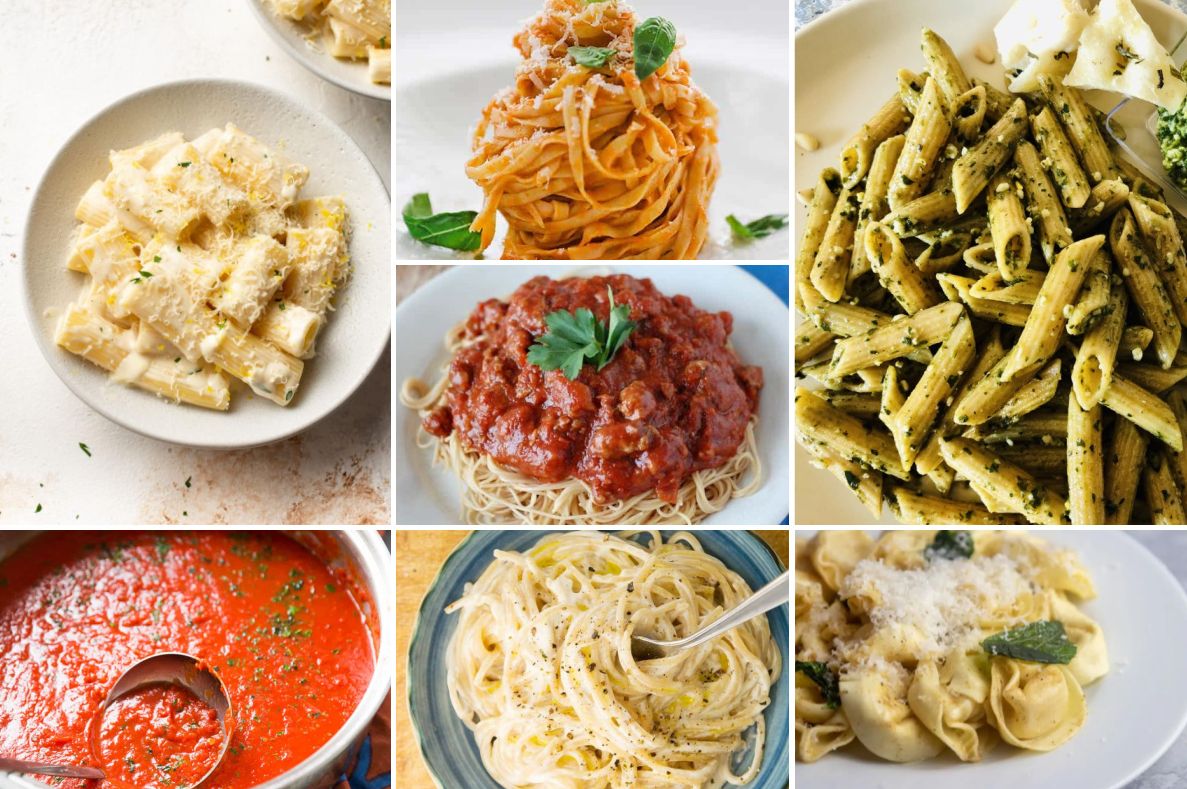
Below you’ll find a list of some of the best sauces for pasta you can find across the Internet. From traditional Italian sauce recipes to Asian classics, learn how to make some of the most popular pasta sauces in the world.
Common Ingredients in Different Types of Pasta Sauce
One of the biggest advantages of preparing pasta for dinner is that the ingredients used to create pasta sauces are common pantry staples that can be easily sourced.
Here are just a few of the most common ingredients that can be found in different types of pasta sauce:
Lemon juice
Lemon juice is used in pasta sauces to add a tangy flavor and also a note of acidity to heavy cream sauces that might taste too bland or rich otherwise. Fresh lemons and lemon zest is best for pasta sauce, but bottled lemon juice can be used in a pinch.
Grated cheese
A common addition in cream-based and tomato based Italian pasta sauces is grated cheese. Grated cheese is also one of the main ingredients of pesto, a green herb-based pasta sauce flavored with pine nuts and basil.
Fresh herbs and spices
Fresh herbs play a special part in many pasta sauces. They help cut through the rich savory depth of the base flavors in them. Basil is one of the most common herbs found in pasta sauce, but garlic cloves and chili flakes are also popular.
Tomatoes
Many traditional Italian pasta sauces are tomato sauces. These include classic spaghetti sauce (also known as a bolognese sauce) and arrabbiata sauce. The rich flavor of tomatoes goes well with ingredients like ground pork and ground beef.
Heavy cream
Heavy cream is the foundation ingredient for most white pasta sauces. Cream pasta sauces are used in many vegetarian and seafood pasta dishes like pasta primavera and clam sauce.
Ground meat
Even though it’s easy to make pasta vegetarian, ground meat is often featured in pasta dishes to make them a one-pot meal. Most types of pasta sauce feature one kind of meat or another, but ground pork and ground beef are classic Italian cuisine.
Olive oil
Olive oil is useful in making pasta sauce for frying vegetables, aromatics, and proteins. As a flavor ingredient, it also features prominently in several famous pasta sauces such as pesto sauce and aglio e olio.
In many cases, the sauces created by these ingredients can be used with multiple proteins. You can use these pasta sauces to dress seafood, chicken, pork, and more.
The Best Pasta for Different Sauces
You can technically use any pasta sauce with any pasta shape if you’re just trying to get dinner together. However, there are certain pasta shapes that are better suited to different types of pasta sauce than others.
- Thin, long noodles: Thin long noodles like spaghetti noodles and angel hair pasta sauce are best paired with light pasta sauce types like olive oil, lemon, or white wine-based pasta sauces. The thin sauce is able to soak into the thin noodles more easily.
- Penne noodles: The tubular shape of penne noodles makes them a practical match for rich, meaty sauces like ragu and bolognese.
- Rotini: The spiral shape of rotini pasta is useful for holding bits of herbs and cheese in thicker, chunkier pasta sauces like pesto.
- Orecchiette: Orecchiette pasta is a round, flat pasta with a scooped shape that is commonly paired with vegetable-based pasta sauces.
- Flat noodles: Flat noodles like fettucine and pappardelle are best for soaking up creamy sauces like alfredo sauce.
Having the exact right shape of pasta for your pasta sauce won’t make or break a dish. However, pairing the right pasta with the right sauce can take your weeknight dinner to the next level.
Different Types of Pasta Sauce
Red Pasta Sauces
1. Homemade Marinara Sauce
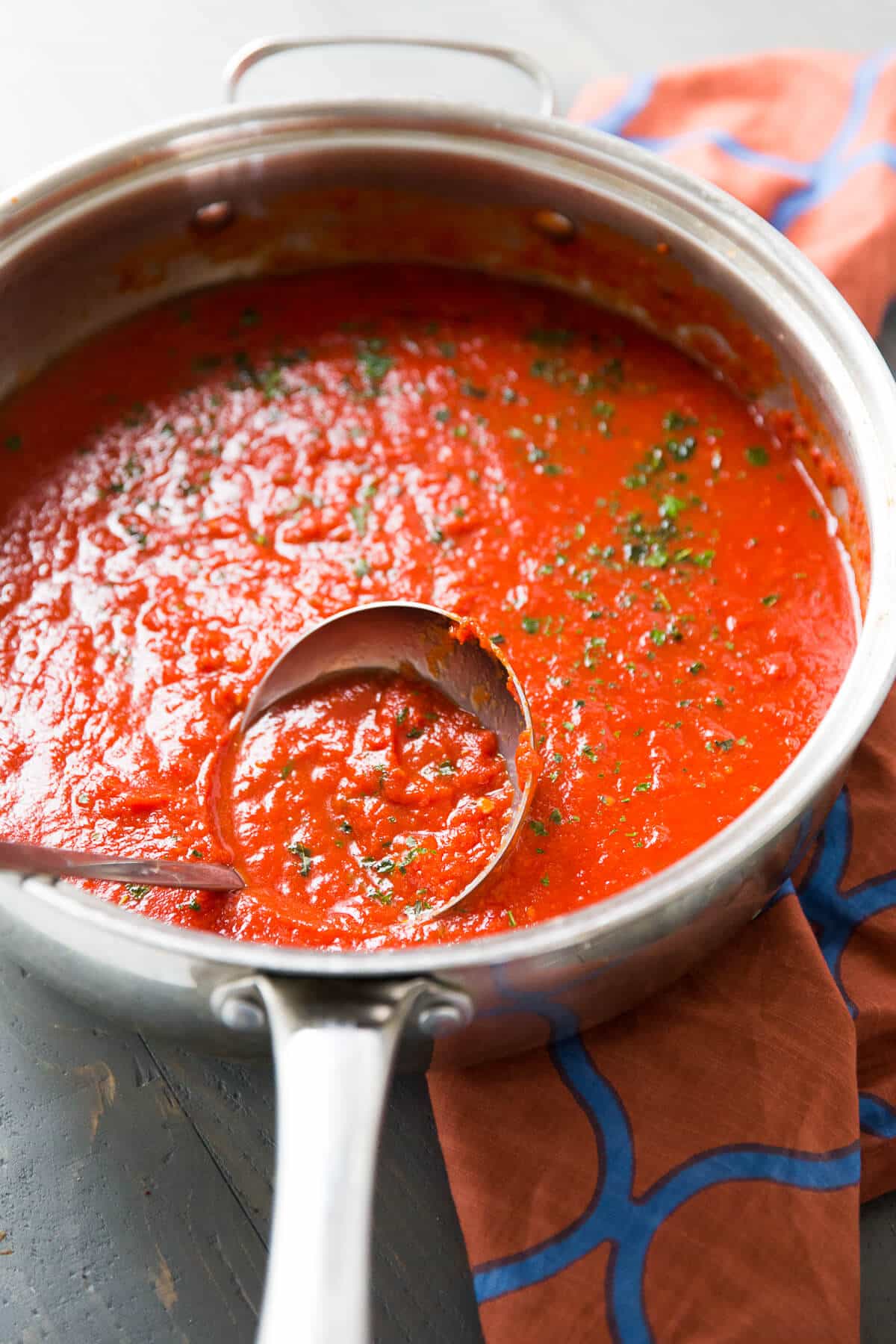
One of the most famous Italian pasta sauces is marinara sauce. This classic pasta red sauce can be served with either ground meat or sauteed shrimp.
This recipe from Lemons for Lulu combines fresh juicy tomatoes along with tomato sauce and fresh herbs for a red sauce that complements a wide variety of different meats and vegetables.
Instructions
To make homemade marinara sauce, saute onion and crushed tomatoes together with fresh herbs, salt, brown sugar, and red pepper flakes. The sauce simmers on the stovetop until all the ingredients have time to blend their flavors together.
Then the sauce is poured over a pasta of your choice. Marinara is a luscious sauce that is one of the easiest pasta sauces to make.
2. Cacciatore Sauce
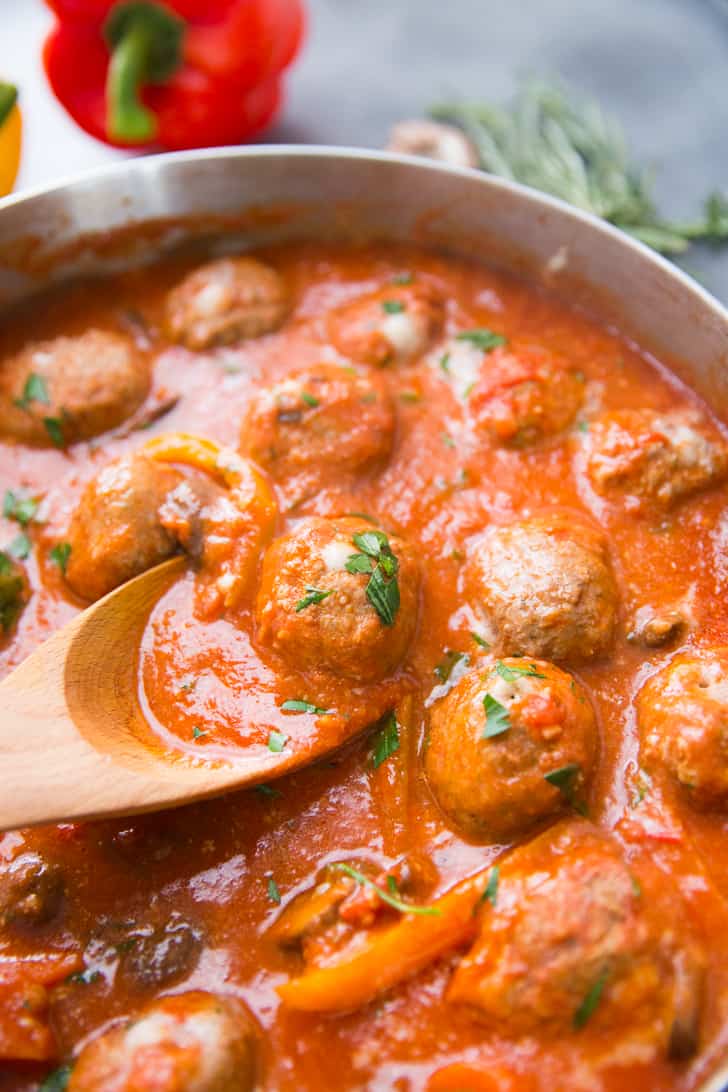
Chicken cacciatore is an Italian hunter’s stew that is loaded down with fresh chicken, tomatoes, olives, peppers, and other vegetables. This chicken red sauce is often used as a pasta sauce to dress heavier Italian pasta types like pappardelle.
Check out this recipe at Lemons for Lulu to learn how to make this Italian classic for yourself.
Instructions
To make chicken cacciatore, brown chicken thighs seasoned with black pepper and other spices in a stovetop skillet in olive oil. You will remove and reserve the meat after cooking.
Use the chicken fat in the pan to fry the vegetables and aromatics in the sauce. Then return the chicken and finish everything off in the oven.
3. Spicy Bolognese Sauce
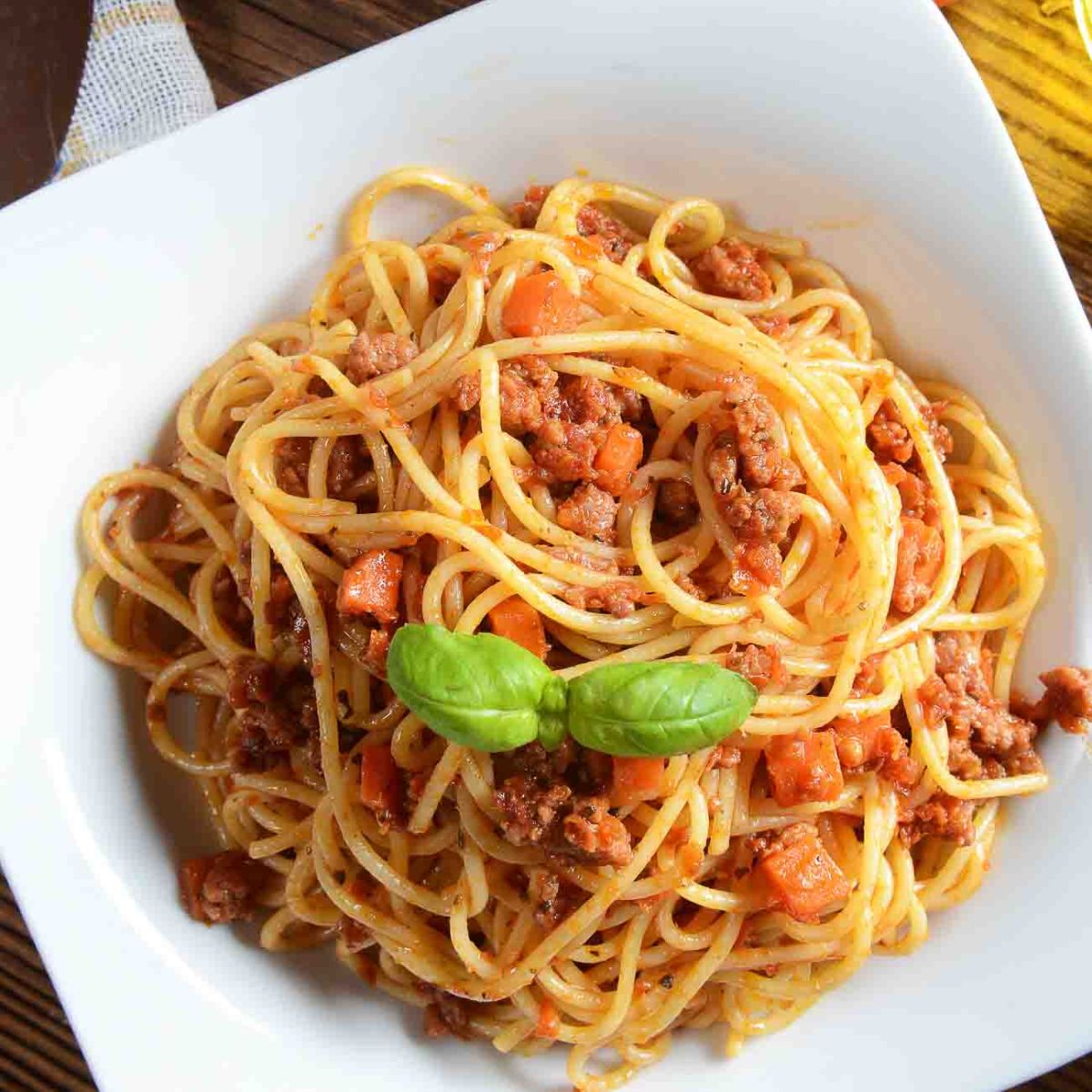
Many pasta sauces include red pepper flakes as one of their spices. But in many sauces, the heat of the sauce is an afterthought.
This spicy bolognese sauce from Archana’s Kitchen features fried bacon, ground beef, fresh herbs, and homemade tomato puree from fresh tomatoes. The recipe also uses fresh chili instead of chili flakes for extra spiciness.
Instructions
To make spicy bolognese sauce, puree fresh tomatoes in a food processor until smooth, and then reserve. Next, you will fry bacon, garlic, onions, carrots, and oregano. Finally, you’ll add ground meat and cook until the meat is browned before adding your tomato puree, black pepper, and other spices to taste.
4. Pomodoro Sauce
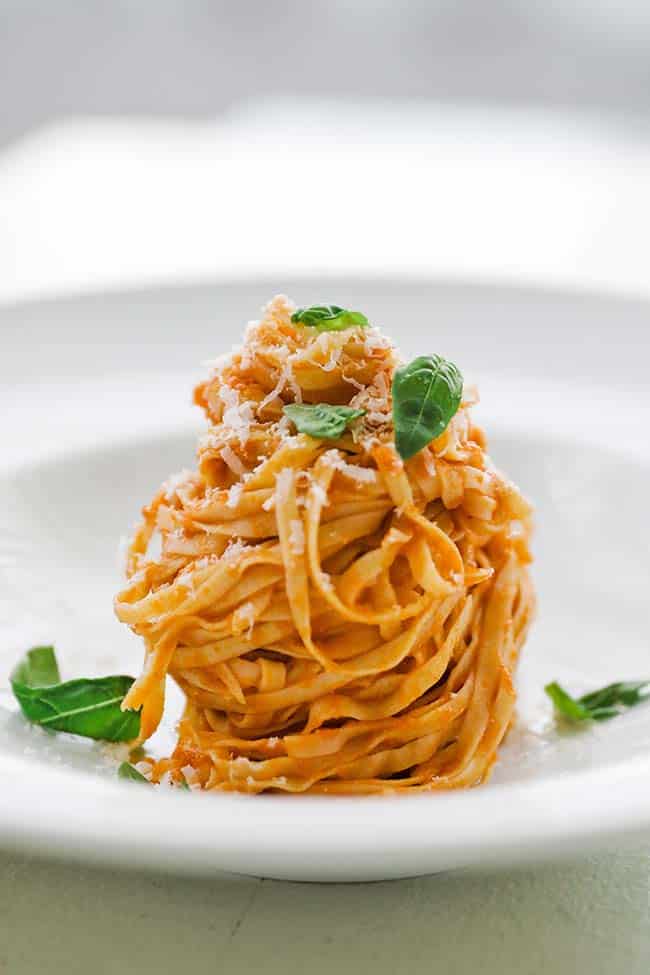
Pomodoro sauce is a light tomato-based sauce that is created using olive oil and fresh tomatoes. This light sauce is useful for highlighting fresh ingredients from the garden like newly-picked basil and oregano.
While Pomodoro sauce is similar to a marinara sauce, it is actually slightly thinner and less runny than marinara. Try this recipe from Billy Parisi to make your own version.
Instructions
To make Pomodoro sauce, puree tomatoes and set them aside before frying aromatics like yellow onion and garlic in a stovetop pan. Once your aromatics are cooked until clear and fragrant, add the tomato puree.
Then allow the sauce to cook down before adding basil, salt, and other seasonings. Try topping with a nice Italian cheese like pecorino or grated parmesan cheese to finish the sauce.
5. Arrabbiata Sauce
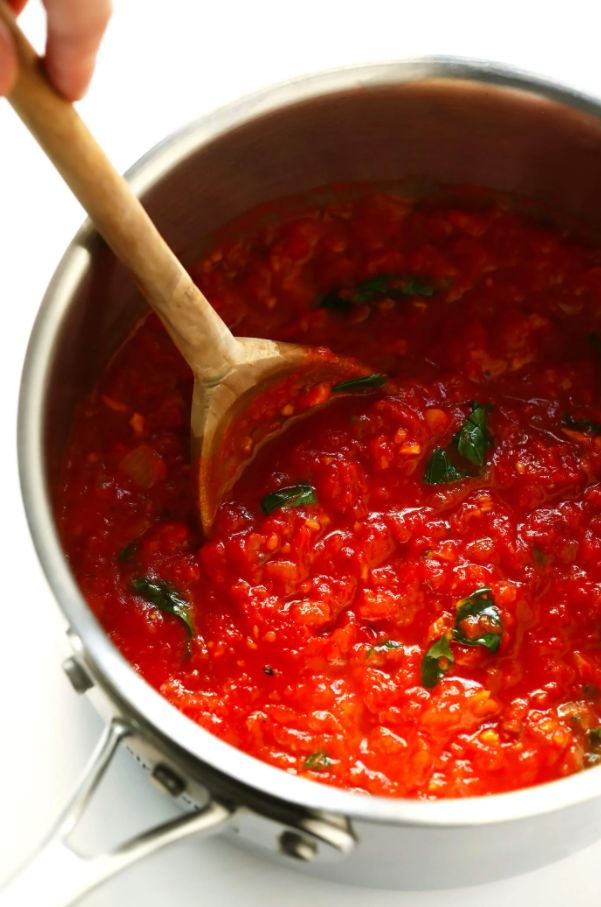
Arrabbiata is a spicy rich sauce that gets its heat from red pepper flakes cooked with the tomato sauce. This sauce originates from the city of Rome and is one of the classic Italian tomato-based sauces.
For a fun way to spice up your weekly pasta night, Arrabiata sauce is the way to go. Check out the recipe at Gimme Some Oven.
Instructions
The key to a good arrabbiata sauce is to simmer red chili flakes in olive oil at the beginning of the recipe. Then you will add the other ingredients like tomatoes to give the sauce a strong, spicy base. Be sure to add plenty of onions and garlic for a savory, aromatic base.
Cream and Cheese Pasta Sauces
6. Vodka Cream Sauce
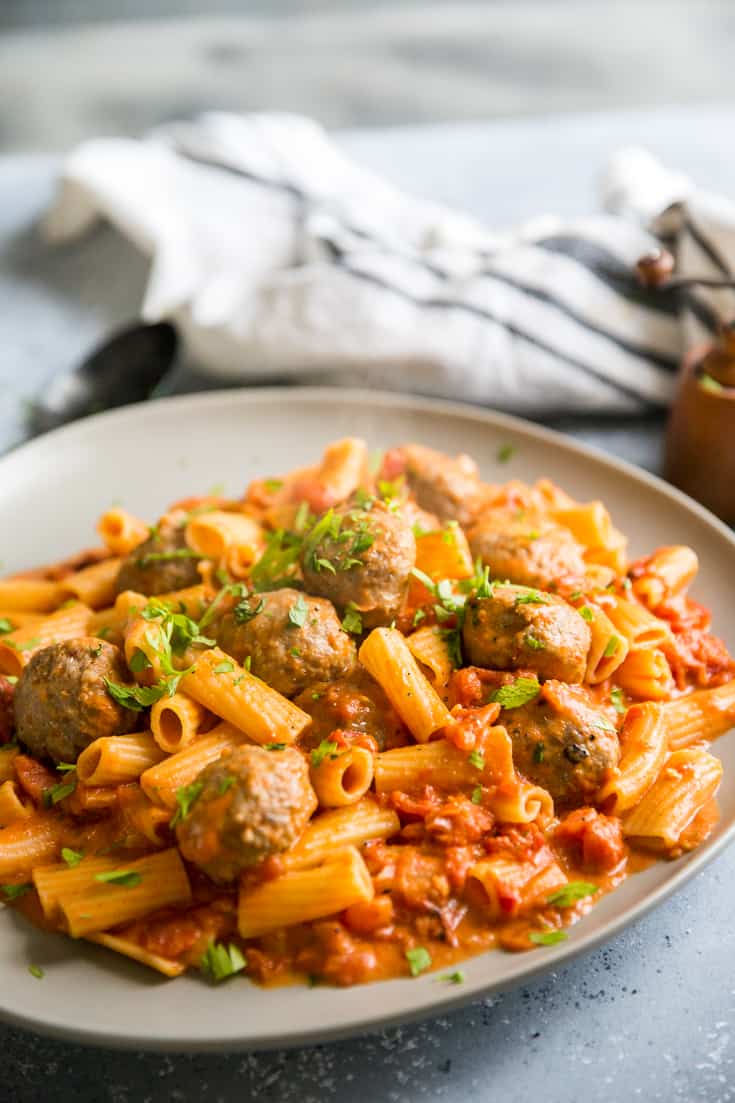
If you want a nice mix between a cream sauce and a tomato-based sauce, then vodka cream sauce is for you. This savory sauce has an acidic tomato sauce with a creamy sauce finish that helps temper the tangy flavors.
The inclusion of vodka helps caramelize the fresh tomatoes, giving this sauce a subtle sweetness to combat the tangy overtones of the tomatoes. Try this version over at Lemons for Lulu.
Instructions
In this recipe, cook your aromatic vegetables like garlic cloves and onions in vodka over a low heat. Doing so helps to extract their flavor. After the aromatics have been cooked down in vodka, add the tomatoes, chicken stock, and fresh herbs to help finish out the sauce.
7. Creamy Beer Cheese Sauce
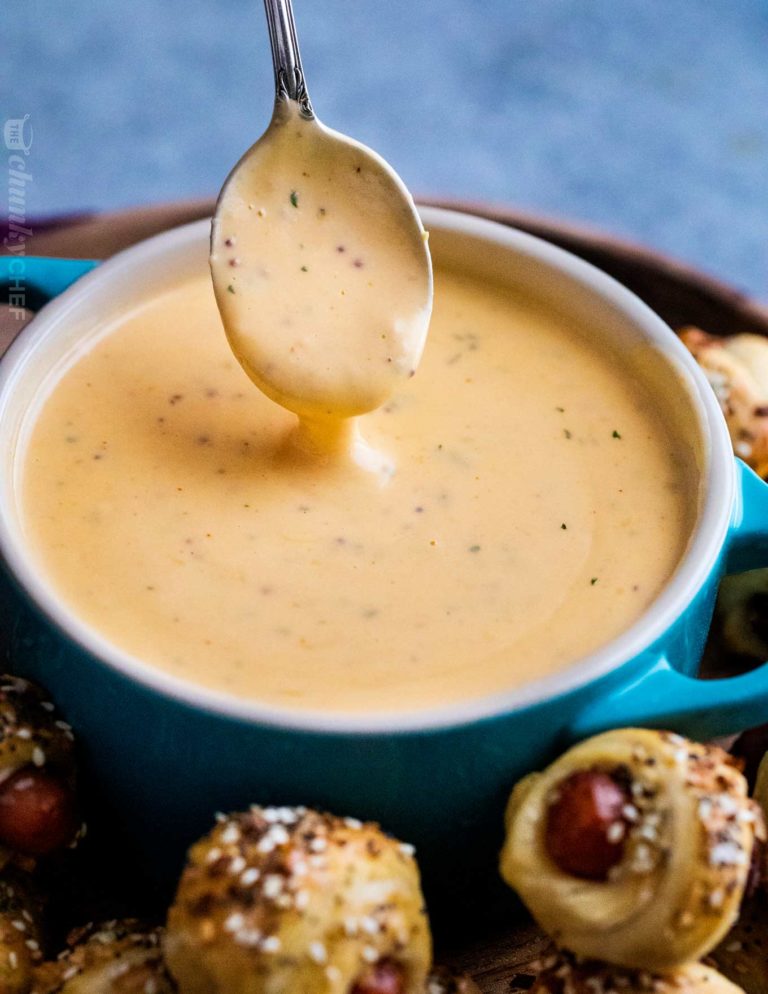
Beer cheese sauce isn’t one of the most popular sauces to go over pasta. However, this sauce from The Chunky Sauce goes well with most thicker types of pasta noodles or macaroni.
For the perfect accompaniment to cauliflower florets or broccoli, this beer cheese sauce is great if you’re trying to add more vegetables to your pasta sauce.
Instructions
A big advantage of beer cheese is that it is very versatile. You can add jalapenos or other peppers to add more heat, or you can adjust the types of cheese used to adjust the final flavor of the cheese sauce.
8. Creamy Lemon Pasta Sauce
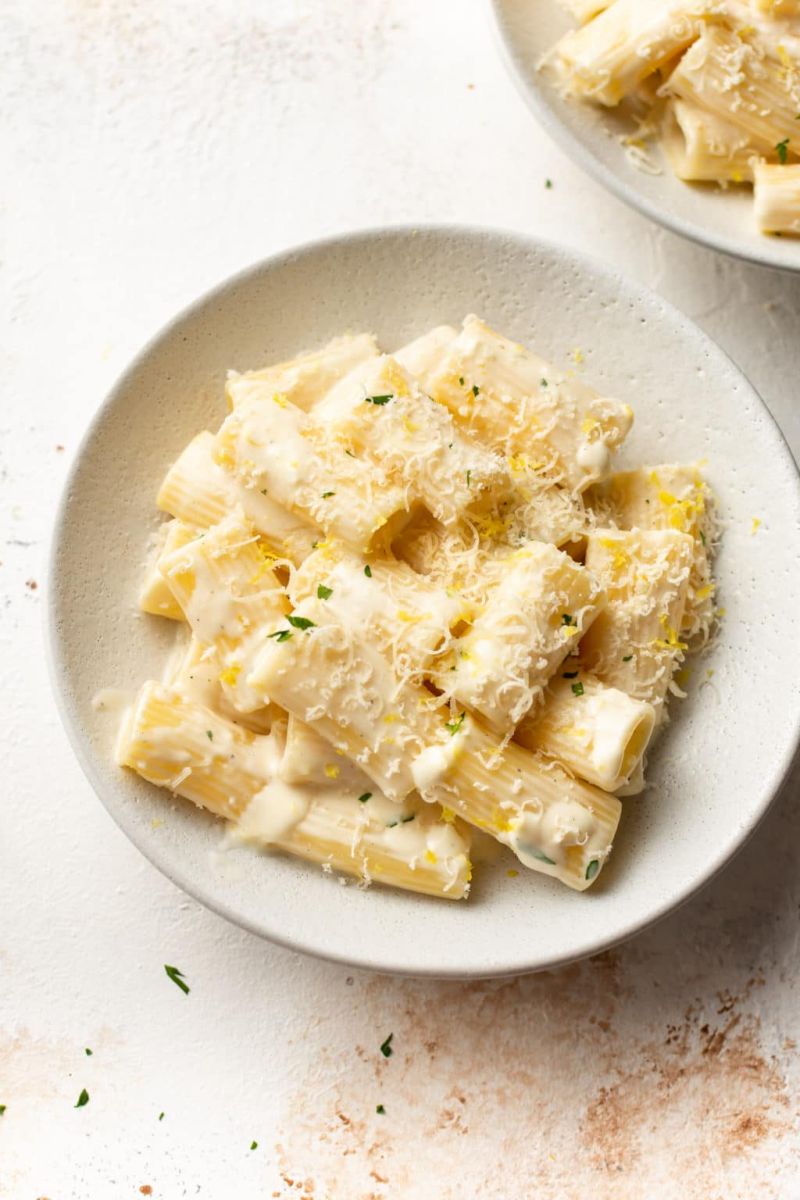
Creamy lemon pasta sauce can be paired with either seafood or vegetables. With its use of everyday kitchen ingredients, this sauce is easy to quickly throw together.
In this sauce, lemon juice is paired with garlic and grated parmesan cheese for a bright, tangy dish that you can serve with everything from grilled asparagus to sauteed shrimp. Learn how to make it at Salt and Lavender.
Instructions
To make a creamy lemon pasta sauce, melt butter in a skillet. Then add the flour to thicken it. Next, you will add garlic, lemon juice, lemon zest, and chicken broth or white wine for flavor. Whisk in cream until the sauce thickens before topping it off with fresh grated parmesan cheese and mixing with a pasta of your choice.
9. Alfredo Sauce
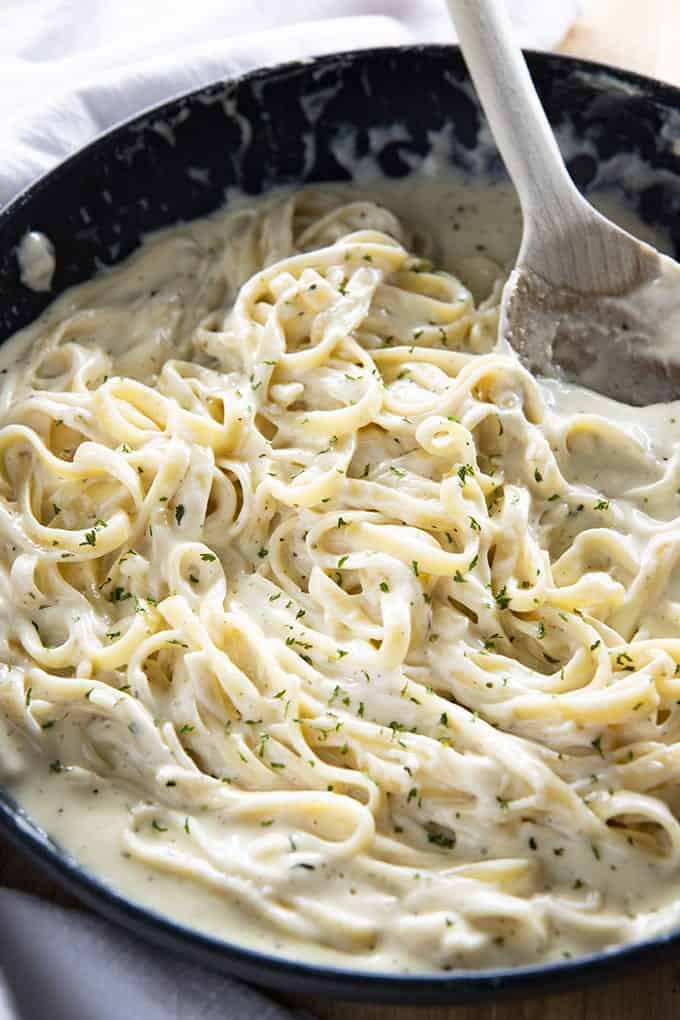
Traditional alfredo sauce like this sauce from The Salty Marshmallow is one of the simplest and most traditional of the Italian white sauces. The recipe is a basic sauce that is a useful base for a wide variety of entrees.
With this alfredo sauce, you can make healthy grilled items such as vegetables or chicken richer and more indulgent. Adding pasta water to the sauce can help thin it out if it grows too thick during cooking.
Instructions
To make alfredo sauce, simmer butter and cream together in a stovetop pan. It is important to make sure to avoid a hard boil in order to avoid scalding the cream. Once the sauce has been cooking for roughly two minutes, add seasonings such as garlic, fresh herbs, black pepper, and salt.
10. Cream Cheese Sauce
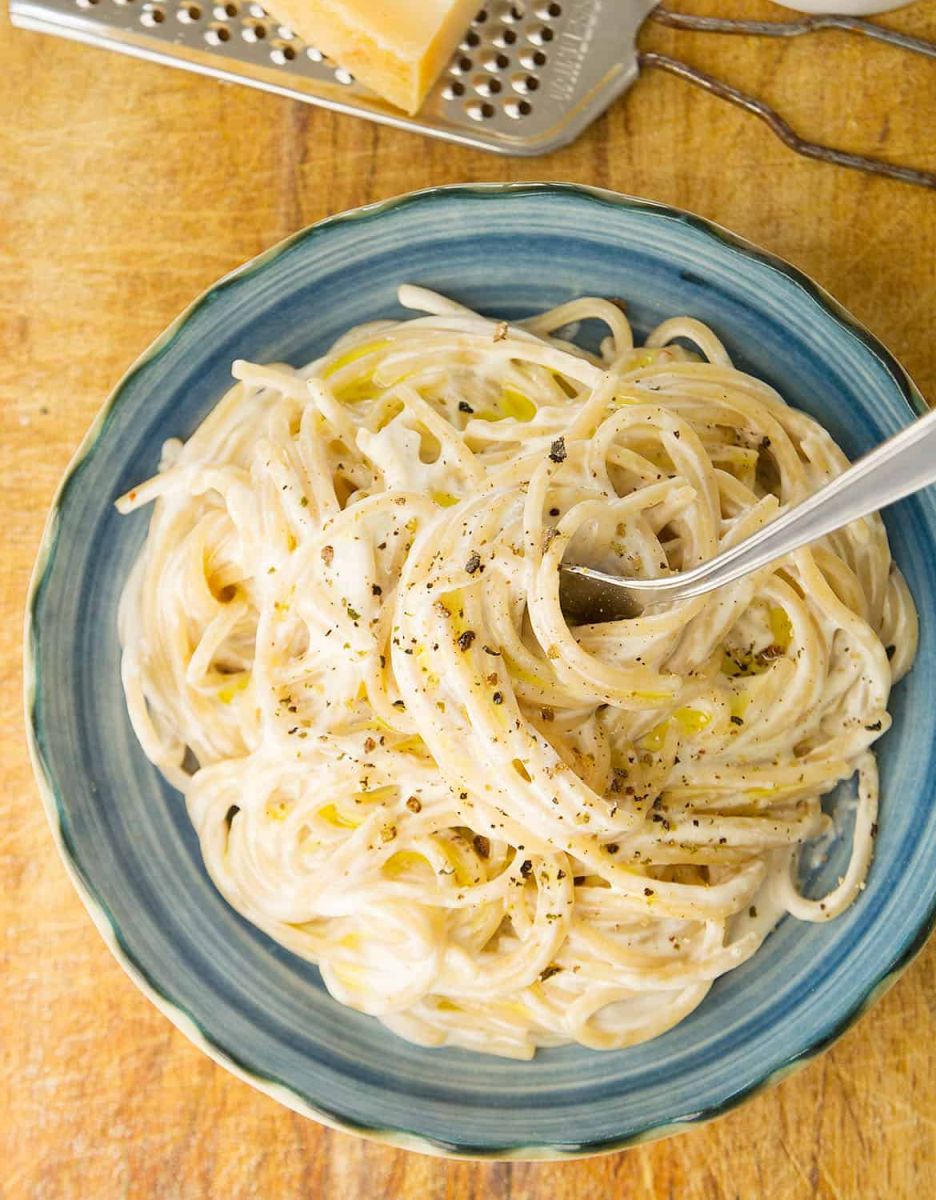
If you want an easy alternative to traditional alfredo sauce, this cream cheese sauce at The Clever Meal is a quick option to throw together on a busy weeknight. By melting cream cheese and adding spices along with garlic-infused olive oil and grated parmesan cheese, you can have a fresh pasta dish on the table in under twenty minutes.
Instructions
To make the cream cheese sauce, simmer the garlic in olive oil until translucent. Then add cream cheese, parmesan cheese, pasta water, and seasoning. Drain the sauce before tossing it with pasta and combining it to serve.
11. Carbonara Sauce
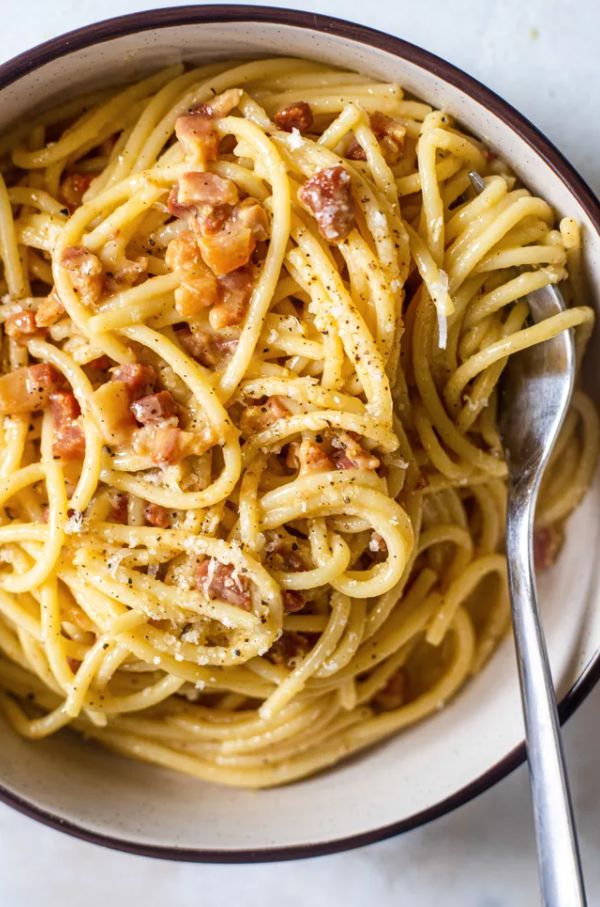
Carbonara sauce is a silky sauce that is made from egg yolks, bacon, olive oil, and grated Parmigiano Reggiano or parmesan cheese.
Traditionally, carbonara sauce is served with a long noodle pasta such as spaghetti or angel hair pasta. Learn how to make this simple yet classic pasta sauce at Simply Recipes.
Instructions
The key to a good carbonara sauce is to mix the fresh egg yolks with the hot pasta after it is cooked. The pasta has to be hot enough to quickly cook the egg yolks without causing them to curdle.
Heavy cream is also commonly added to carbonara to make the sauce silky and rich, though this is not a traditional method for making it.
Butter Pasta Sauces
12. Brown Butter Sauce
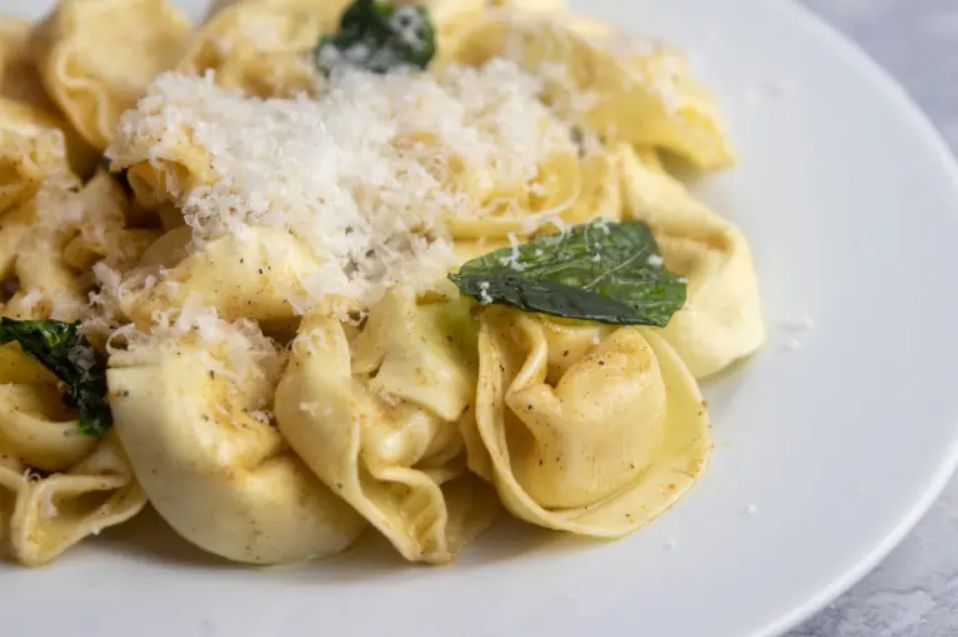
Everything tastes better when it’s slathered in fresh hot butter, and pasta is no exception to the rule. Brown butter sauces like this sauce from Giadzy are an excellent combination with stuffed pasta types like ravioli and tortellini and can be brightened up with fresh herbs like basil and sage.
Instructions
Brown butter sauce is made by melting down butter in a skillet until it takes on a dark golden color. Then you will season it with salt, black pepper, and nutmeg. Toss the butter sauce with the pasta and top with grated parmesan or pecorino cheese.
13. Garlic Butter Sauce
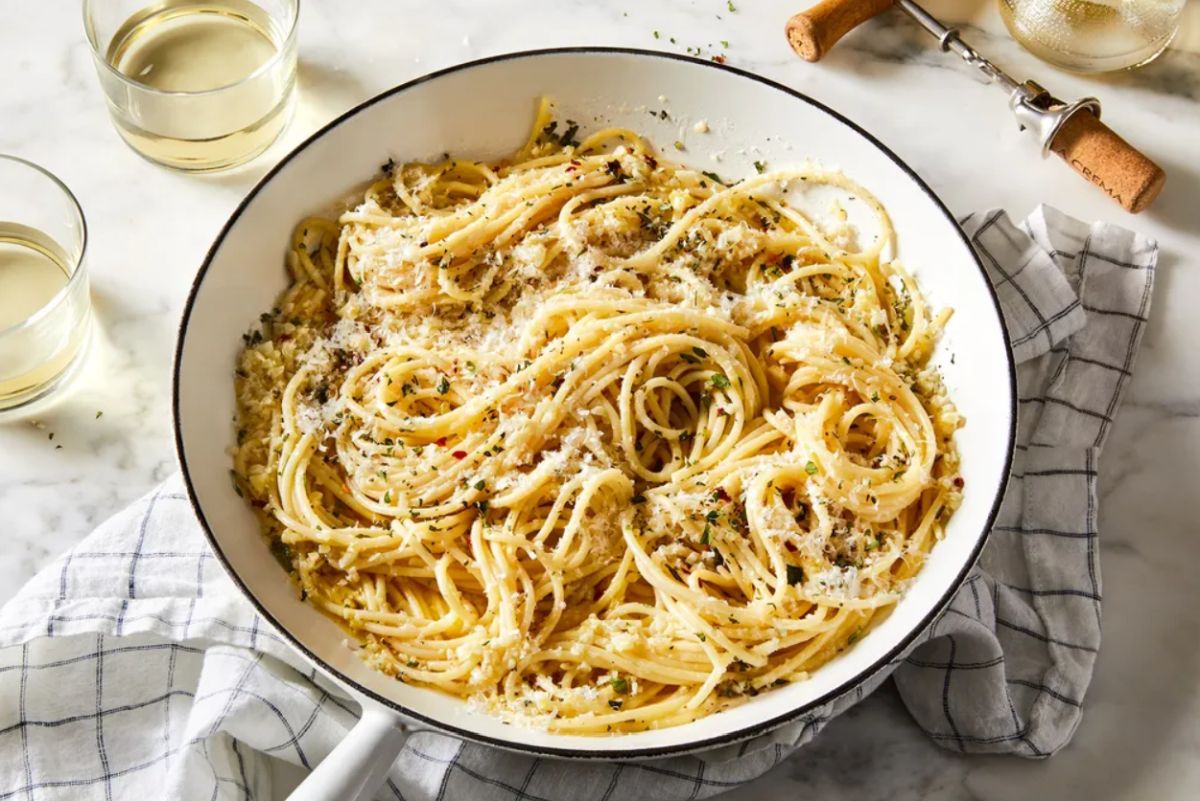
Another variation on butter pasta sauce is the garlic butter sauce. Along with being a great topper for plain pasta, garlic butter sauce can also be used to dress seafood or freshly cooked vegetables.
Secondary herbs can be added to fry in the hot butter and help deepen the complexity of the flavors in the sauce.
Instructions
Garlic butter sauce can be made by melting down butter in a stovetop skillet. Then you will add minced garlic to cook down in the butter.
Be sure to watch the garlic and the heat of the skillet carefully to prevent it from burning and becoming bitter. Add fresh herbs and lemon juice to the garlic butter sauce and serve immediately.
14. Lemon Caper Sauce
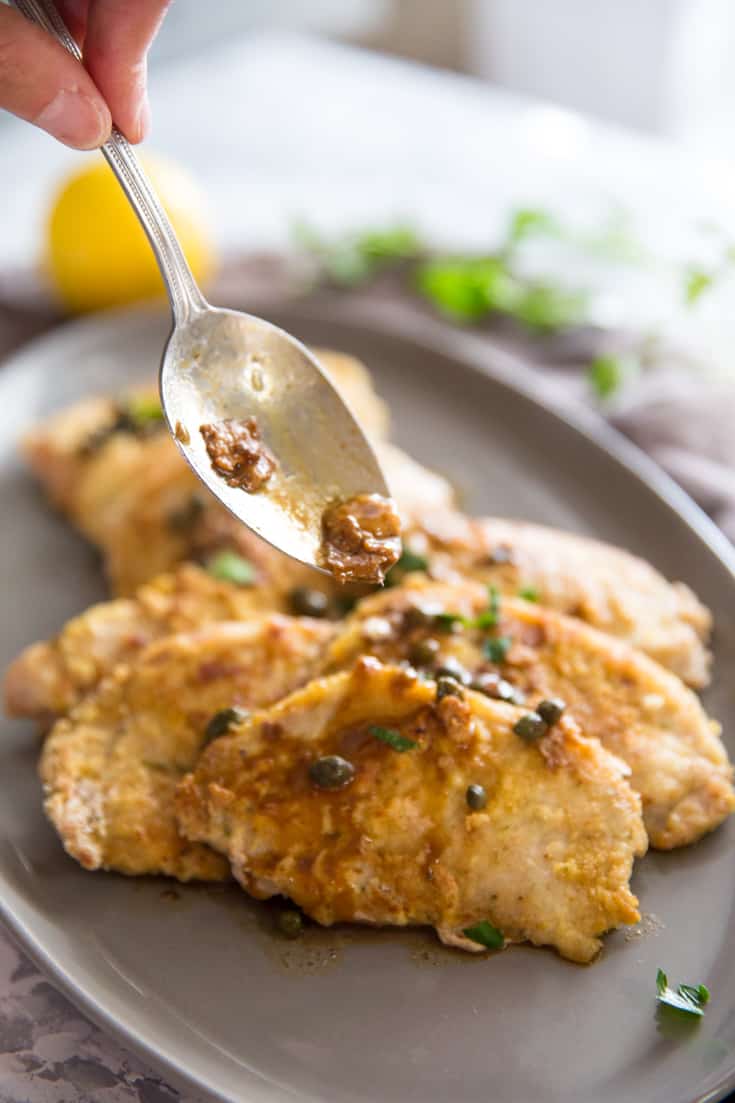
For a tangy and light take on a butter pasta sauce, lemon juice and capers can provide a good match for vegetables, chicken, pork, and seafood pasta dishes. The preserved capers add pops of color and flavor to the sauce, while fresh minced herbs over the top help brighten everything up.
Get the recipe for yourself at Lemons for Lulu.
Instructions
To make a lemon caper sauce, melt butter in a hot skillet. Add chicken broth, lemon juice, and capers before whisking the sauce and allowing it to come to a boil.
Reduce heat and simmer until the sauce cooks down and thickens.
15. Vegetarian Bolognese
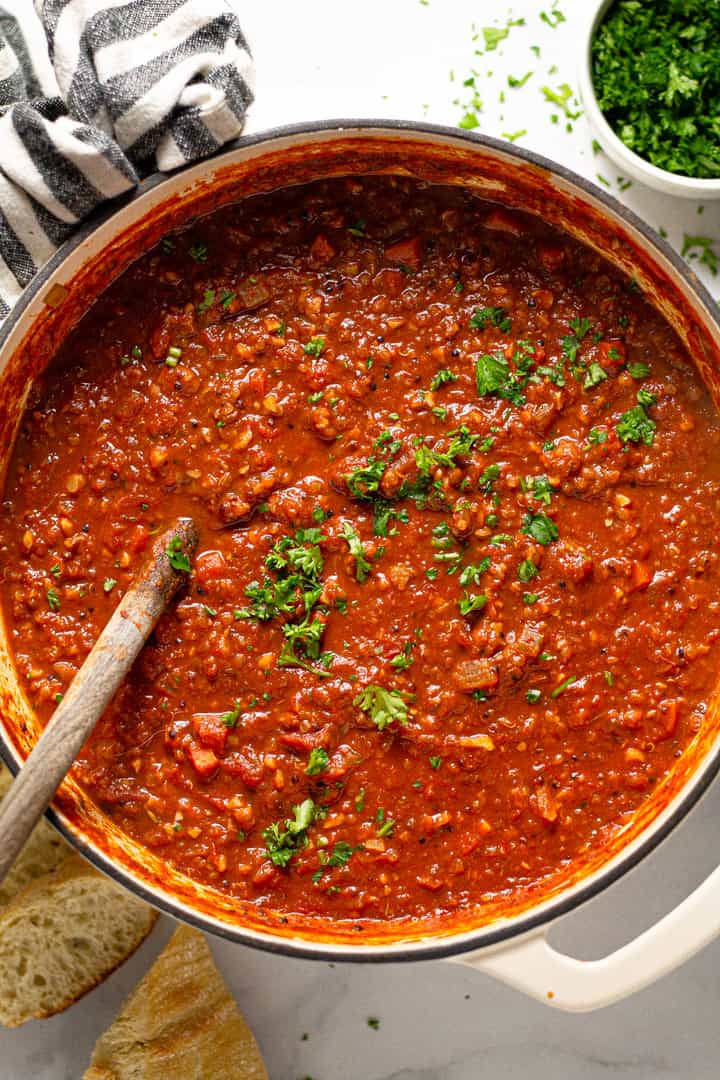
Bolognese might traditionally be a meat-based sauce, but this vegetarian bolognese sauce at Midwest Foodie has all of the thick richness of traditional bolognese without any of the meat. Instead, this sauce substitutes healthy vegetarian ingredients like walnuts and quinoa to help thicken things up while adding a nutty, savory flavor.
Instructions
Vegetarian bolognese is made by frying onions, carrots, and celery in a large pot until caramelized. Then you will add seasoning and red wine to deglaze the vegetables.
Finish the sauce by adding crushed tomatoes, chopped walnuts, grated parmesan, and quinoa to thicken. Then simmer for at least half an hour before serving.
16. Pesto Sauce
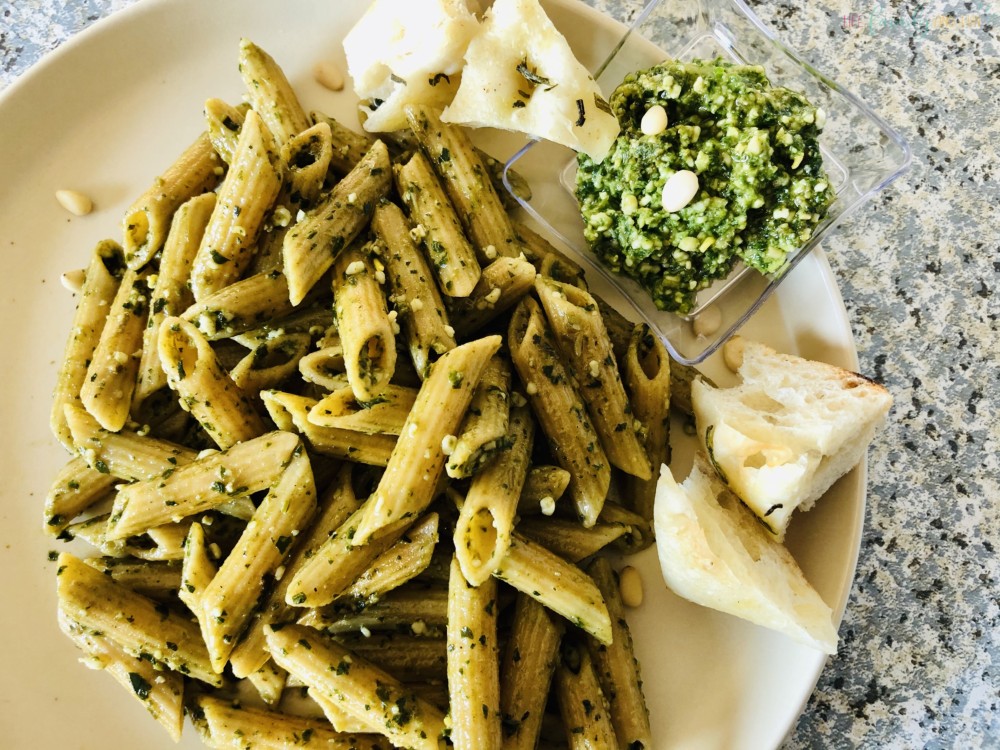
Pesto sauce is easily one of the most famous pasta sauces in the world, especially when it comes to dressing vegetarian pasta sides. This simple sauce is made by chopping up either pine nuts or walnuts and blending them with olive oil and fresh herbs until smooth.
Traditional pesto alla Genovese is made with Genovese basil, but other herbs can also be used. Learn to make a traditional pesto sauce over at Life Family Fun.
Instructions
To make pesto sauce, combine olive oil, pine nuts, grated cheese, and basil in a food processor. Then blend the mix until combined but not completely smooth.
The consistency of the sauce should be a chunky paste. Once combined, toss the fresh pesto with cooked pasta and top with additional cheese before serving.
17. Creamy Mushroom Sauce
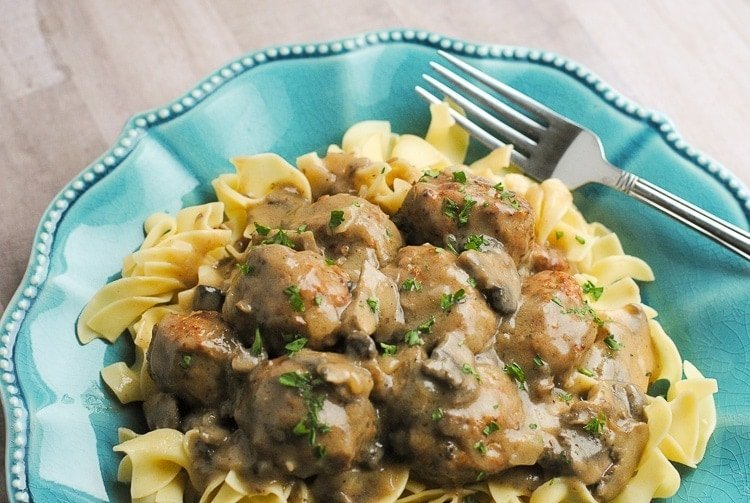
Mushrooms are a popular main dish in vegetarian meals since they take many kinds of seasoning well and give dishes a savory, meaty texture. This creamy mushroom sauce at Life Family Fun is made with mushrooms added. However, the meat can easily be subbed out for additional mushrooms or vegetarian meatballs instead.
Instructions
Fry mushrooms and seasonings in olive oil until the mushrooms are soft and fragrant. Next, you will add a store-bought mushroom sauce and combine thoroughly. Mushrooms can also be roasted in the oven before adding them to the sauce to make their flavors deeper and more complex.
Meat Based Pasta Sauces
18. Quick and Easy Ragu Sauce
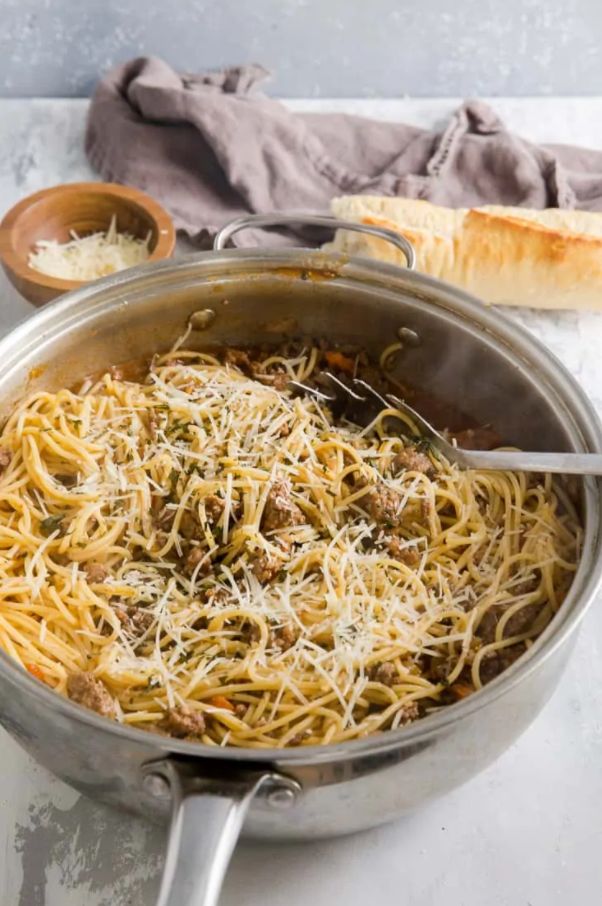
Ragu sauce is similar to bolognese sauce except that it has a thicker base, more tomatoes, and is made with red wine rather than white wine. This quick and easy ragu sauce at Lemons for Lulu can be thrown together in twenty minutes, but it tastes better the longer it is allowed to simmer on the stovetop before serving.
Instructions
To make a ragu sauce, fry aromatics and vegetables in olive oil until caramelized, then add ground beef and Italian sausage to fry them in the vegetable mixture. This gives the vegetables a rich flavor from the meat fats.
Stir in tomato paste, balsamic vinegar, and seasonings before finishing with beef broth and a splash of red wine to taste.
19. Slow Cooker Meat Sauce
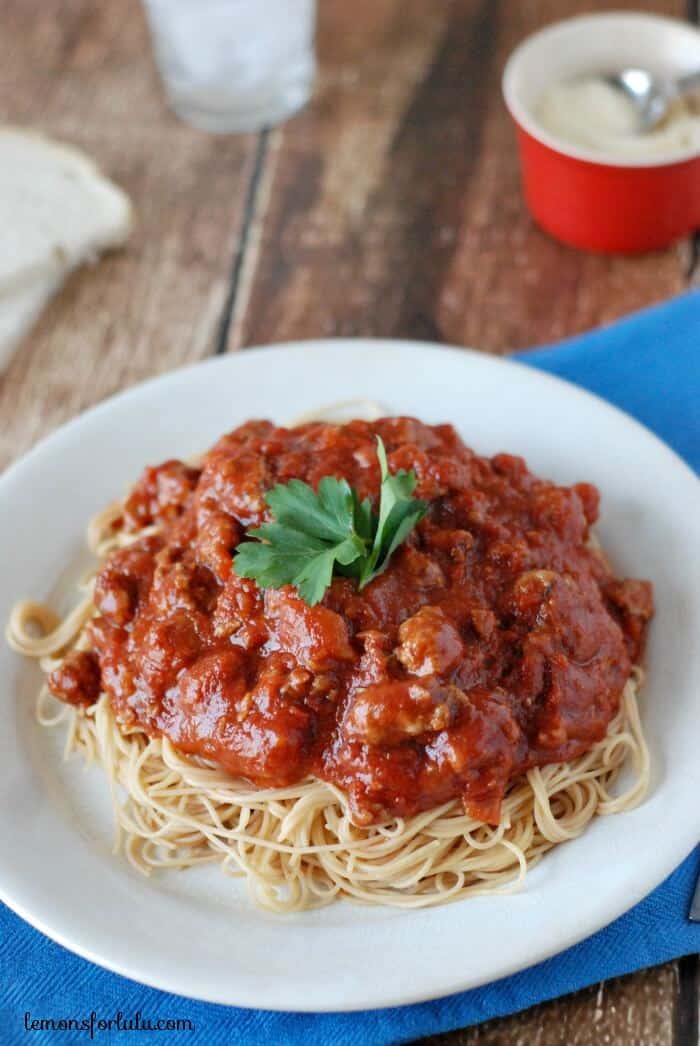
If you need a rich and savory meat-based sauce but you don’t have three or four hours to build one on the stove, a slow cooker sauce recipe like this one at Lemons for Lulu is a practical compromise. This recipe also uses ground turkey and Italian turkey sausage rather than the more traditional beef or pork for a lighter sauce that still has all of the classic Italian flavors.
Instructions
Start this slow cooker meal like a traditional meat sauce by frying the meat and onions on the stovetop until browned, then draining off the fat from the meat and putting it in the slow cooker. Add tomatoes, seasonings, and other ingredients and combine thoroughly before heating the sauce in the slow cooker for three hours on high.
20. Clam Sauce
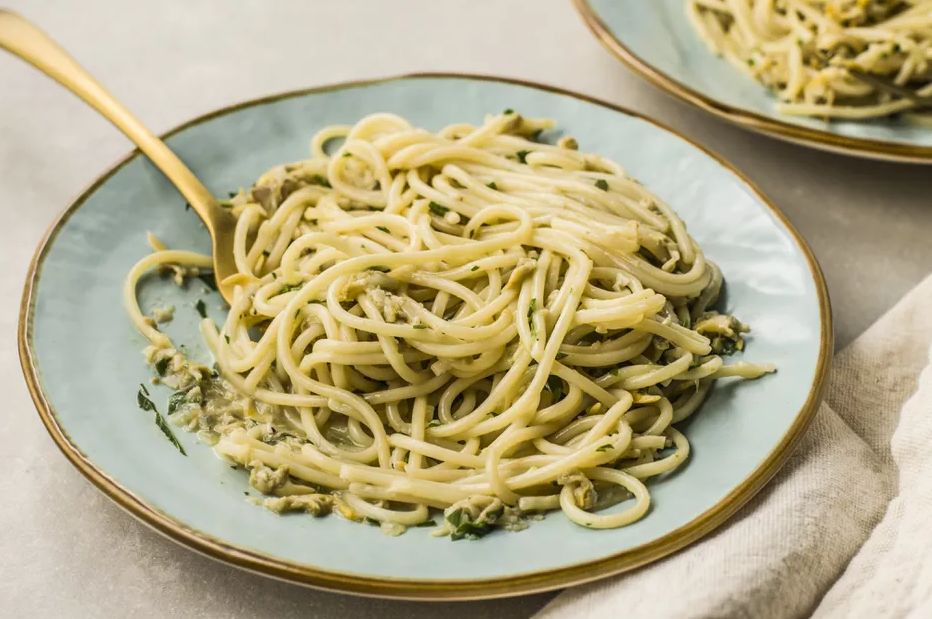
A meat-based pasta sauce doesn’t have to include beef or pork. This clam-based white sauce at The Spruce Eats can be used to toss with hot pasta or even as a pizza topping.
While this recipe can potentially be made with fresh clams, canned clams packed in their own liquid are a quicker and easier solution for a fast weeknight meal that will make you feel like you’re eating at the beach.
Instructions
Fry the chopped clams with their liquid in a skillet with olive oil, minced onion, parsley, and garlic. Simmer on the stovetop for about five minutes or until the sauce is reduced by half, then serve by adding some pasta water to thicken the sauce before topping the pasta.
Types of Pasta Sauce FAQ
How Many Types of Pasta Sauce Are There?
There are over fifteen different kinds of sauces that are traditionally served over cooked pasta. Red and white pasta sauces are popular in Western and Central European countries, while dark sauces like black bean sauce and sweet-spicy pepper sauces are popular in Asia.
What Is the Most Popular Pasta Sauce?
The most popular pasta sauce in many countries around the world is bolognese sauce. Bolognese is a thick sauce made by combining canned tomatoes, tomato paste, and ground meats, typically beef or pork.
Bolognese sauce is a huge cornerstone of Italian cuisine and is one of the most frequently encountered meat sauces in the culinary world.
What Type of Onion Is Best for Pasta Sauce?
Yellow or sweet Vidalia onions are the best onions for adding to pasta sauce. This is because yellow onions have a sweet, mellow flavor and the large amounts of sugar they contain help them caramelize in the pan when frying.
Should Pasta Be Rinsed Before Adding Sauce?
Hot pasta should be combined with pasta sauce without rinsing for the best flavor. This is because the pasta will absorb more flavor and sauce when it is hot.
As the starches in pasta begin to cool, this causes the pasta to absorb less sauce.
What Pasta Holds the Most Sauce?
Rigate is a type of pasta that holds a lot of sauce due to the ridges in the pasta’s shape, making it a smart option for thicker sauces that need to thoroughly coat the pasta for a satisfying flavor and texture.
What Sauce Was First Put on Pasta?
One of the oldest recorded uses of sauce on pasta was recorded in an Italian cookbook from 1790 by the Roman chef Francesco Leonardi. The sauce used was a tomato sauce in a traditional Italian recipe.
Can Dry Pasta Be Cooked in Pasta Sauce?
Most recipes call for pasta to be cooked separately before combining it with pasta sauce. However, it’s possible to cook the pasta directly in pasta sauce as long as the additional liquid is added to the sauce for the pasta to absorb as it cooks.
Can You Start Pasta in Cold Water?
It’s tempting to start pasta in cold water if you’re in a hurry and don’t want to wait for the water to boil, but try to resist the temptation if you’re working with fresh pasta. Starting fresh pasta in cold water can cause the pasta to absorb too much water and become mushy.
On the other hand, dried store-bought pasta can be started in a pot of cold salted water and brought to boiling without ruining the pasta’s texture.
Sauces Make Pasta a Versatile Meal
Pasta with sauce is one of the fastest and easiest meals that you can make. The types of pasta sauce using different proteins, vegetables, and seasonings are seemingly endless. No matter which kind of pasta dishes you like best, the right sauce can take your next meal to the next level.
